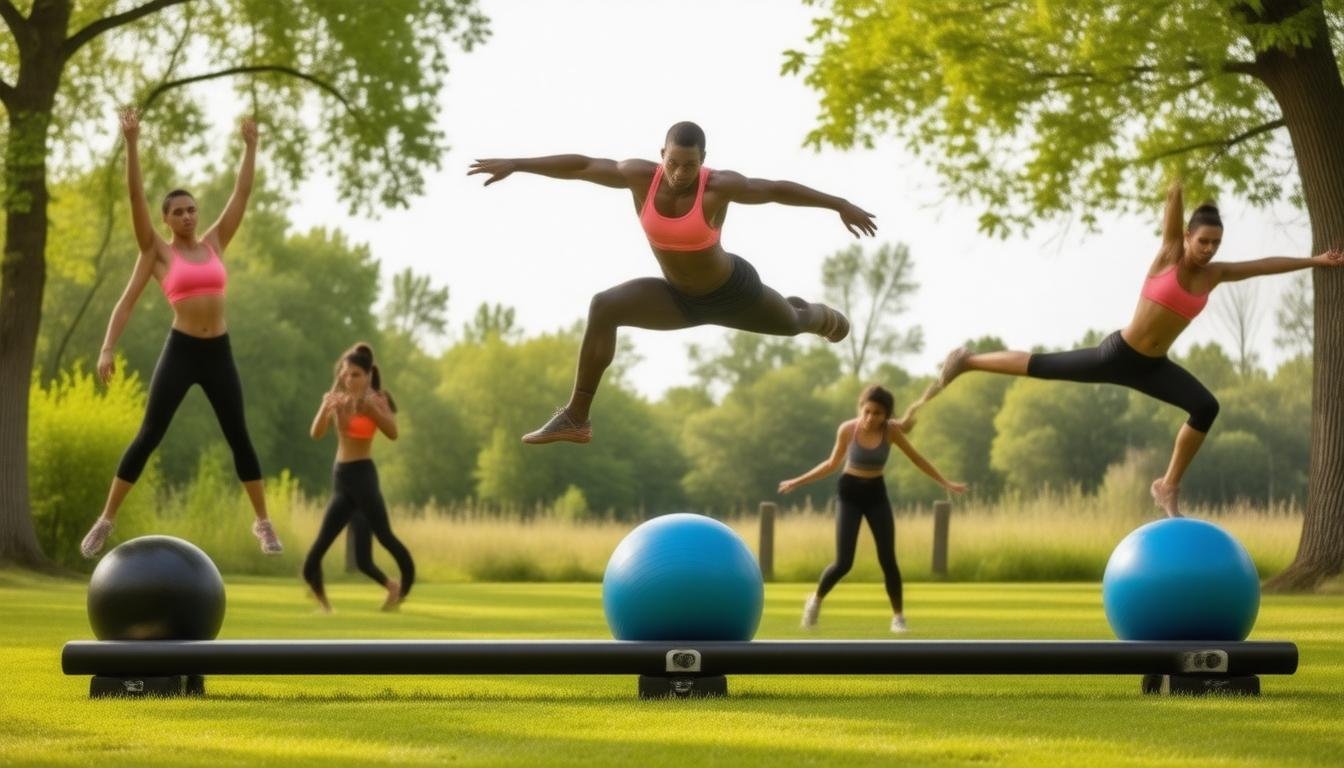Mastering balance is not just about staying upright; it’s a crucial component of overall fitness that enhances stability, coordination, and strength.
Whether you are an athlete looking to improve your performance or someone simply wanting to maintain your independence as you age, integrating balancing exercises into your fitness routine can yield significant benefits.
In this article, we will explore the importance of balance, the advantages of practicing balancing exercises, various types suited for different skill levels, how to effectively incorporate them into your daily life, common pitfalls to avoid, and tips for tracking progress and setting achievable goals to enhance your balance and coordination.
Your Sciatica Pain-Free Future Starts Here – Click to Learn More!
Key Takeaways
- Balance is crucial for overall physical fitness and injury prevention.
- Incorporating balancing exercises can enhance stability, coordination, and athletic performance.
- There are various balancing exercises suitable for all skill levels, from beginners to advanced.
- Avoid common mistakes to maximize the effectiveness of your balancing practice.
- Setting clear goals and tracking progress can lead to significant improvements in balance skills.
Introduction to Balance and Its Importance
Balance is a fundamental aspect of our physical health and well-being, serving as the foundation for many daily activities.
Whether it’s standing, walking, or performing sports, maintaining balance is crucial.
This is where balancing exercises come into play.
Engaging in regular balancing exercises can significantly enhance your stability, coordination, and overall strength.
They not only help prevent falls, especially in older adults, but also improve body awareness and muscle control.
Incorporating a variety of balancing exercises into your fitness routine can lead to improved athletic performance and greater functional ability in everyday tasks.
By understanding the importance of balance, you can pave the way for a healthier, more active lifestyle.
Benefits of Balancing Exercises
Balancing exercises offer a multitude of benefits that enhance both physical and mental well-being.
Engaging in these exercises not only improves stability and coordination but also strengthens the muscles responsible for maintaining posture.
This is particularly important as we age, as falls become a significant risk.
Regular practice of balancing exercises can lead to better body awareness, which translates into improved performance in daily activities and sports.
Moreover, they contribute to injury prevention by increasing flexibility and reducing the likelihood of strains.
Additionally, focusing on balance can promote mindfulness, as these exercises require concentration and body control, helping to reduce stress levels and promote overall mental clarity.
Incorporating balancing exercises into your fitness routine is a simple yet effective way to support a healthier lifestyle.
‘Balance is not something you find, it’s something you create.’ – Jana Kingsford
Types of Balancing Exercises for Different Skill Levels
Balancing exercises are a vital component of any fitness regimen, helping to improve stability, coordination, and overall body awareness.
Depending on your skill level, there are various types of balancing exercises you can incorporate into your routine.
For beginners, simple activities like standing on one leg or using a balance board can effectively build foundational skills.
As you progress, you might explore more challenging exercises such as single-leg squats or dynamic movements that require you to balance while in motion.
Advanced practitioners may benefit from incorporating balance-focused activities within complex workouts, like integrating balancing exercises into yoga or Pilates flows.
Regardless of your experience level, these exercises not only enhance balance but also promote core strength, making them beneficial for athletes and casual exercisers alike.
Your Sciatica Pain-Free Future Starts Here – Click to Learn More!
How to Incorporate Balancing Exercises into Your Routine
Incorporating balancing exercises into your routine can significantly enhance your stability, coordination, and overall body awareness.
Start with simple movements like standing on one leg or heel-to-toe walking to gradually build your balance skills.
Aim to include these exercises a few times a week, integrating them into your warm-up or cool-down sessions.
For a more engaging routine, consider using stability balls, balance boards, or even yoga and tai chi, which naturally incorporate balancing challenges.
Remember to listen to your body and progress at your own pace, as consistency is key in seeing improvement in your balancing exercises.
Common Mistakes to Avoid When Practicing Balancing Exercises
When it comes to improving your physical fitness, incorporating balancing exercises into your routine can provide tremendous benefits, including enhanced stability, better coordination, and reduced risk of injury.
However, there are several common mistakes that many people make when practicing these exercises that can hinder their progress or even lead to injury.
One prevalent mistake is neglecting to engage your core muscles.
Your core plays a vital role in maintaining balance; therefore, failing to activate it can compromise your stability during exercises like single-leg stands or yoga poses.
Another frequent error is rushing through the movements.
Balancing exercises require patience and focus to achieve proper form and effectiveness, so it’s crucial to take your time and execute each movement mindfully.
Additionally, many people overlook the importance of using appropriate footwear.
Wearing shoes that lack grip or do not provide adequate support can significantly affect your performance and increase your chances of slipping.
To maximize the benefits of balancing exercises, make sure you are aware of these pitfalls and adjust your practice accordingly.
FAQs
What are balancing exercises and why are they important?
Balancing exercises are physical activities specifically designed to improve your stability and coordination.
They are important because they help enhance overall physical fitness, prevent falls, and improve performance in sports and daily activities.
What are some examples of balancing exercises?
Examples of balancing exercises include single-leg stands, yoga poses like tree pose, balance board workouts, and tai chi.
These exercises can be modified for different skill levels to accommodate beginners or advanced practitioners.
How often should I include balancing exercises in my routine?
It is recommended to incorporate balancing exercises into your routine at least 2-3 times a week.
Consistency is key to improving your balance and coordination over time.
What common mistakes should I avoid while practicing balancing exercises?
Common mistakes to avoid include rushing through exercises, not focusing on form, and not challenging yourself with more difficult variations as you progress.
Always listen to your body and adjust your exercises accordingly.
How can I track my progress in balancing exercises?
You can track your progress by setting specific goals, such as holding a balance position for a longer duration or performing more challenging exercises.
Keeping a journal or using apps to log your workouts can also be helpful in monitoring improvements.






